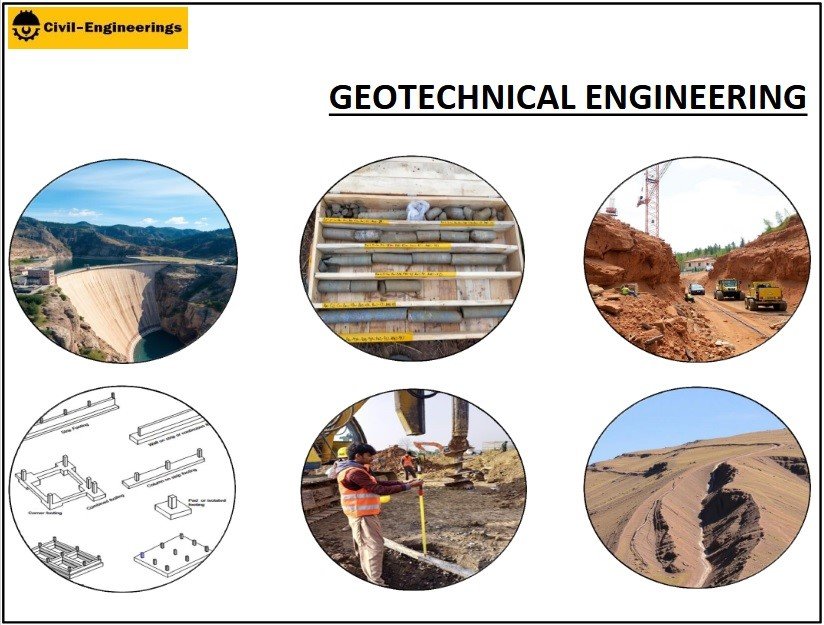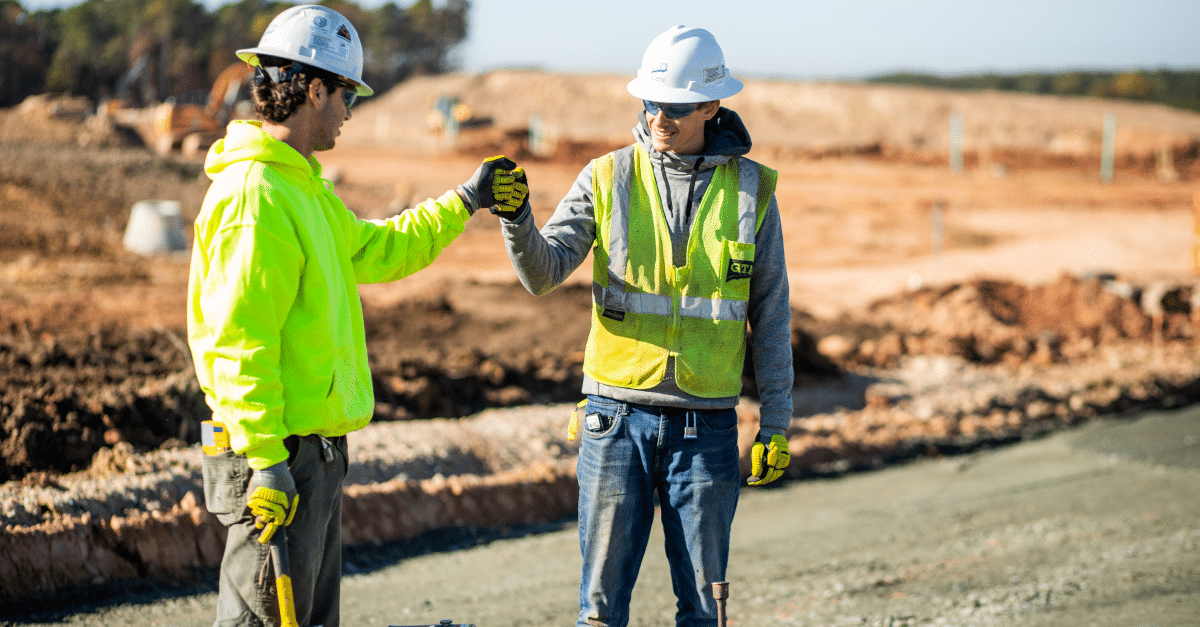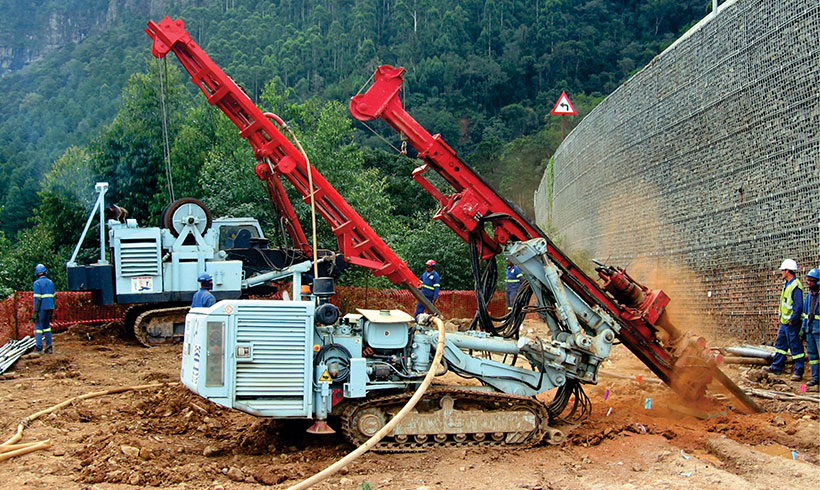How Geotechnical Engineering For Construction Projects can Save You Time, Stress, and Money.
The 10-Minute Rule for Geotechnical Engineering For Construction Projects
Table of ContentsHow Geotechnical Engineering For Construction Projects can Save You Time, Stress, and Money.Geotechnical Engineering For Construction Projects Can Be Fun For EveryoneThe 7-Minute Rule for Geotechnical Engineering For Construction ProjectsThe Facts About Geotechnical Engineering For Construction Projects UncoveredHow Geotechnical Engineering For Construction Projects can Save You Time, Stress, and Money.
Consequently, throughout the examination, it is necessary to drill at the called for deepness and the required number of holes according to the referral of the Canadian Structure Design requirement. Occasionally, the owner could save some Geotechnical Examination price but wind up investing more than the anticipated during the building expense.The responsibilities of the geotechnical professional involve providing material testing for construction assistance. Geotechnical Engineering for Construction Projects. Geotechnical designers evaluate all the field test reports to guarantee that building is taking place as per the project spec. During building, a confirmatory examination for dirt compaction is done on-site to ensure that no future negotiation takes place
After the concrete is put -7 days and 28 days- tests are performed on concrete examples collected from the website to guarantee that the concrete put meets the design requirement. Asphalt core is taken after the Asphalt is laid and compacted to confirm that it satisfies the layout requirement. All lab test reports are analysed by the Geotechnical Designer to make sure that it meets the task specification.
7 Simple Techniques For Geotechnical Engineering For Construction Projects

Geotechnical design plays a crucial duty in guaranteeing the security of construction jobs. Geotechnical design is an essential branch of civil design that focuses on comprehending the behaviour of planet materials, such as dirt and rock.

For a reliable foundation and a smooth construction procedure, trust fund to offer the experience you need. Get in touch with to obtain professional suggestions and geotechnical solutions customized to your next project.
The Single Strategy To Use For Geotechnical Engineering For Construction Projects
When starting a land development task, recognizing the ground underneath your feet is as essential as the frameworks you plan to build above it. Our Geotechnical Engineering team analyse the ground, ensuring it appropriates for the suggested advancement while providing you with the info called for to satisfy your task objectives.
Geotechnical Design looks at the development of the ground, as it is the foundation for all tasks. Where structures require to be developed relative to the ground conditions; ground conditions (e.g., soft ground) may need enhancing depending on the size of the desired framework. Before structure, you need to know regarding the groundwater, wikipedia reference dirt structure, and liquefaction possibility of your land.
For websites that are not attached on the local authority infrastructure added website investigations would certainly be needed to provide technological inputs for on-site stormwater and wastewater. We have experienced Geotechnical Engineers based in each office, sustaining your geotechnical requirements across the country. Connect to us to review how we can sustain your following task.
These records are customized to fulfill the details requirements of a project and consist of design parameters and recommendations for the building of a range of manufactured structures. As giving working as a consultant services covering areas such as slope security and load-bearing capacities for various materials, these engineers undertake study and development activities to improve methodologies, devices, materials knowledge and evaluation covering whole lifecycles.
A Biased View of Geotechnical Engineering For Construction Projects

Rates of pay typically increase as your knowledge and abilities grow, with standards directing to a graduate starting wage of in between 18,000 and 28,000 per year in the UK. This increases to 26,000 to 36,000 with a couple of years of experience and afterwards getting to 40,000 to 60,000+ for senior, chartered or master designers.
With the ideal application it is possible to master the career and gain entry to a challenging yet fulfilling and essential job. A geologist would certainly require to re-train to come to be a geotechnical designer, although there is a lot of cross-over in between both careers, which might make this simpler - Geotechnical Engineering for Construction Projects. Rock hounds require to have an understanding of dirts, rocks and other products from a clinical perspective, while geotechnical engineers tale their understanding of issues such as dirt and rock mechanic, geophysics and hydrology and apply them to engineering and environmental tasks
When beginning, these engineers will often tend to deal with less complex projects, building up understanding and experience ready for even more tough work later on. Geotechnical engineers often tend to be experts in particular areas as they grow in experience, focusing on particular facilities such as railways, roads or water. These engineers also deal with renewable power, offshore and onshore oil and gas, nuclear power, and a lot more.
Excitement About Geotechnical Engineering For Construction Projects
The time taken to come to be a geotechnical designer depends on where you are based, where you research study and what level of education and learning you want to acquire before getting in the workplace. Generally-speaking it takes 3-4 years to get to the standard requirements to go to my site begin an occupation as a geotechnical engineer.
These procedures allow experts to assess a host of dirt auto mechanics including weight, porosity, void-to-solid fragment proportion, permeability, compressibility, optimum shear toughness, bearing capacity and contortions. If the structure needs a deep foundation, engineers will make use of a cone penetration test to approximate the quantity of skin and end bearing resistance in the subsurface.
When analyzing a slope's equilibrium of shear stress and anxiety and shear stamina, or its capacity to stand up to and go through movement, rotational slides and translational slides are frequently considered. Rotational slides stop working along a rounded surface, with translational slides happening on a planar surface area. An expert's goal is to figure out the conditions at which a slope failure might occur.
Commonly, searchings for recommend that a site's soil must be dealt with to improve its shear strength, stiffness and permeability before style and building and construction. When it comes time to set out foundation plans, experts are progressively focused on sustainability, more especially how to lower a foundation's carbon impact. One method has actually been to change 20 percent of a foundation's concrete with fly ash, a waste item from coal fire nuclear power plant.